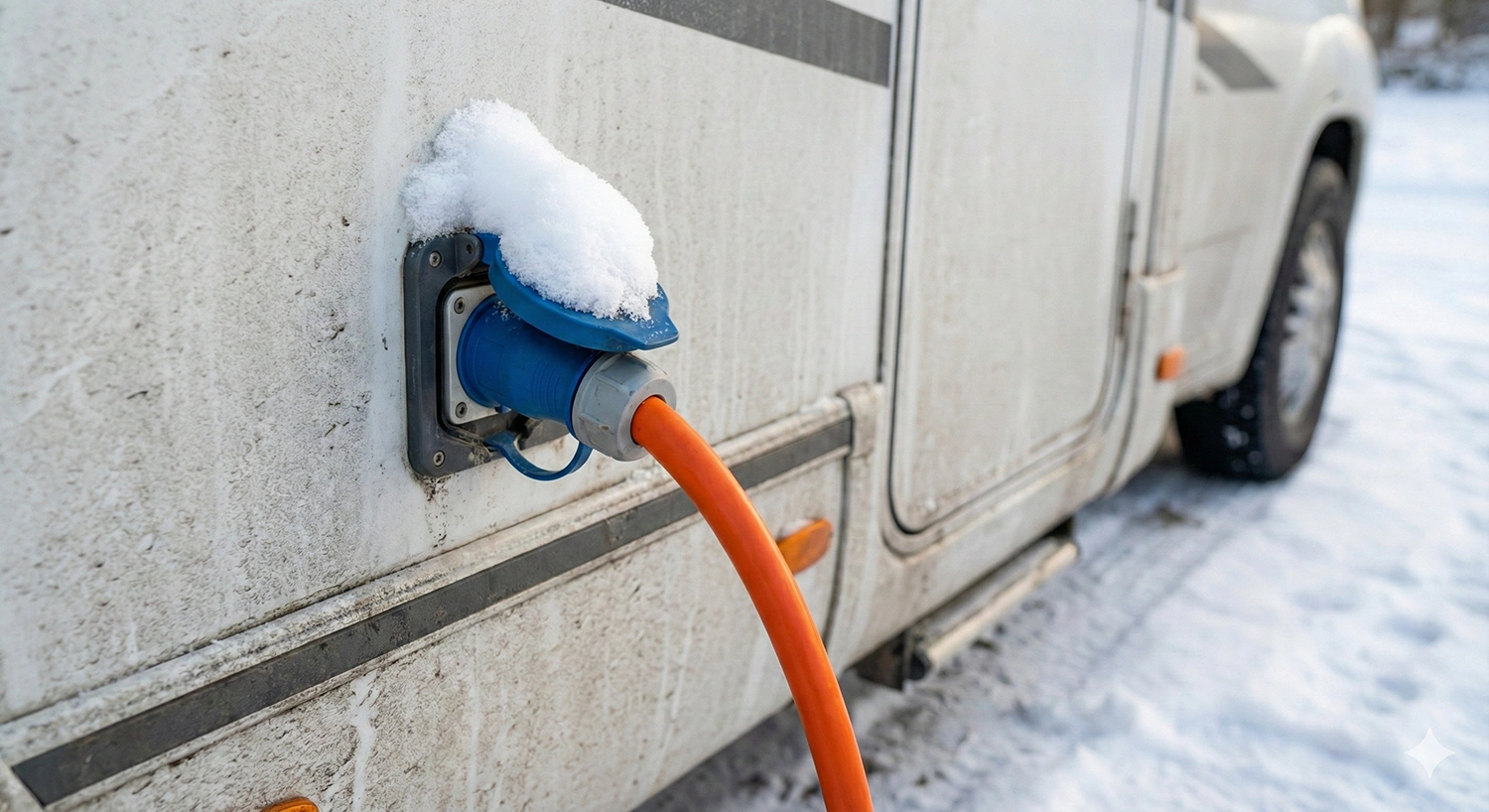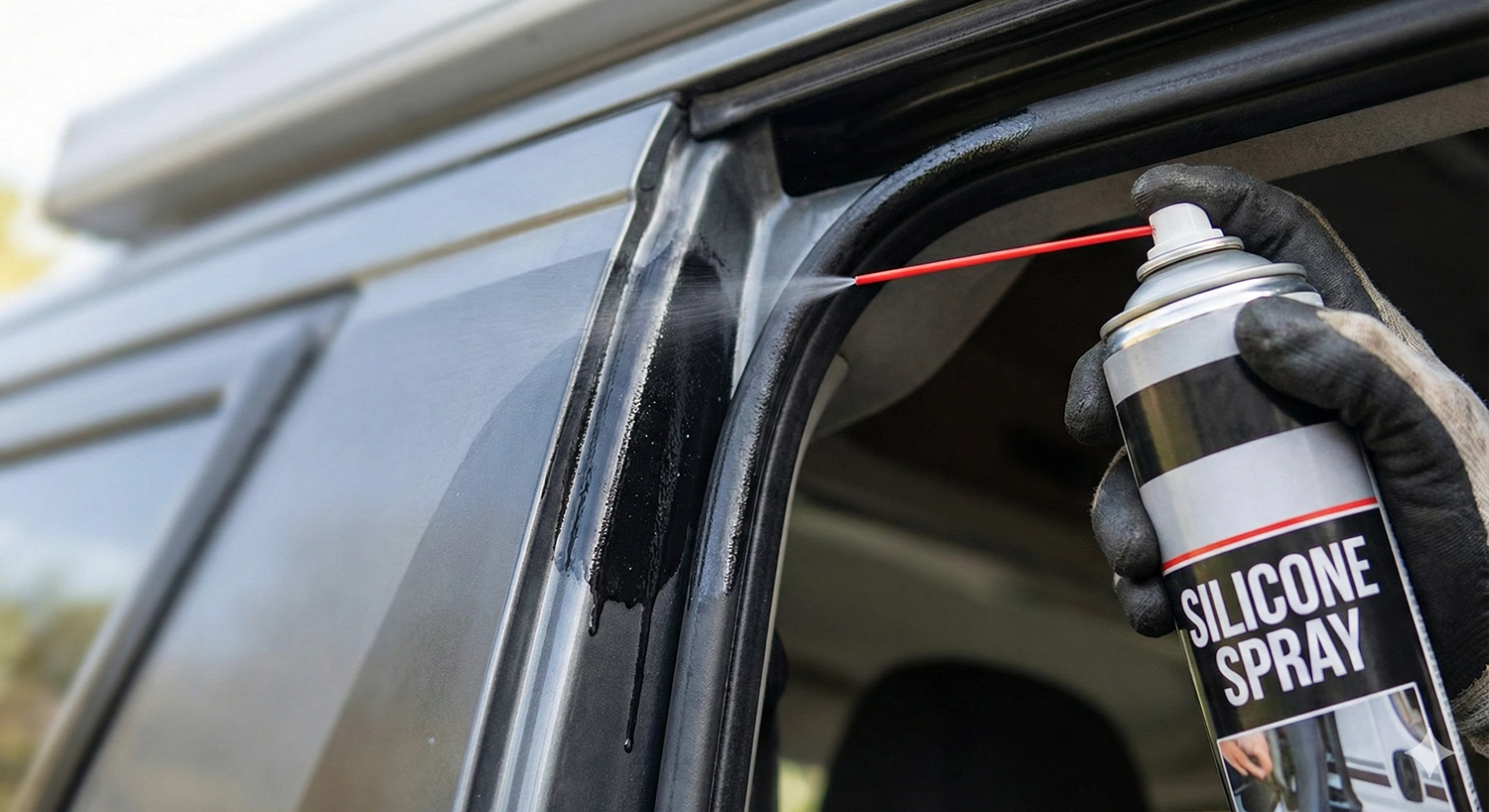When temperatures drop and the travel season winds down, your campervan also deserves a quiet winter break. Proper winterization isn’t just about cleaning—it’s essential maintenance that extends the life of your vehicle and prevents costly surprises in spring.
Winter downtime is the perfect chance to give your camper the attention it needs, check its condition, and protect it from moisture, frost, and wear. With the right preparation, you’ll avoid frozen pipes, dead batteries, and unpleasant springtime repairs. And when the days get longer again, your campervan will be ready for new journeys.
Below you’ll find a complete winterization guide: first for those who won’t use their campervan during winter, and then for everyone who enjoys travelling through peaceful, snow-covered landscapes.
Whenever possible, park your campervan under a carport or in a dry, ventilated space. Outdoor storage is perfectly fine too, as long as the vehicle stands on a solid, slightly sloped surface so water doesn’t pool around the wheels.
If the camper sits on snow, clear it regularly from around the wheels and roof. Excess snow puts pressure on seals and the pop-top roof.
A cover is recommended, but choose a breathable one, never an impermeable PVC tarp that traps moisture.
The most important step before winter storage: fully drain every water tank, pipe, and the water heater.

Cold weather and long inactivity are the biggest threats to campervan batteries. The best solution: keep the camper plugged into shore power, just like on a campsite. Your habitation battery stays charged and maintains its capacity.
If that’s impossible, use a maintenance charger. Plug it into a 230 V outlet (at home or at a service station) and connect it to the vehicle battery. It provides a small trickle charge to prevent depletion.
Check the starter battery once a month. If needed, start the engine and let it run a few minutes to recharge.
If your camper is parked outside, always close the main gas valve and remove the cylinders. Store them upright in a dry, ventilated space, protected from frost and direct sunlight.
If the cylinders remain inside a locker, keep the ventilation openings unobstructed so gas cannot accumulate in case of a leak.
Increase tyre pressure slightly (about 0.2 bar above the recommended value) to prevent flat spots during long stands. Move the vehicle a little every few weeks to distribute the weight.
Do not leave the handbrake engaged. Brake pads may stick to the discs or drums. Instead, use wheel chocks.
Deep clean the interior and remove all food, crumbs, or packaging that might attract rodents.
Mattresses can stay inside but lift them to allow airflow underneath. Wash removable covers and store them in a dry place.
Leave some roof vents or ventilation openings slightly open to prevent condensation buildup.

If your camper has a pop-top roof, clean and fully dry the tent fabric before winter.
Treat the fabric with a water-repellent spray (e.g. Nikwax, Grangers, Holmenkol) designed for outdoor textiles. These silicone- or fluoropolymer-based sprays restore water repellency and protect the fabric from UV damage and moisture absorption. You’ll find them in outdoor and camping stores. Apply evenly to a dry surface and allow the fabric to dry completely.
Lubricate all rubber seals with a silicone-based spray (Sonax, Liqui Moly, WD-40 Specialist). These are available in hardware stores, automotive shops, or camping stores. They are solvent-free, restore rubber flexibility, and prevent seals from sticking or cracking in cold weather.
Reapply the protection at least once a month during winter, especially if the motorhome is stored outdoors.
Close and lock the roof, but never cover it with a non-breathable foil.
A quick monthly check saves many springtime headaches.
Winter can be a magical time to travel—provided your campervan is properly set up.

Keep water in the system only if your tanks and pipes are heated. Otherwise, drain everything after each use, including the water heater.
Ensure your Truma or Webasto system has proper airflow. Keep air outlets and intake vents clear so warm air circulates freely. Check regularly for condensation near the heater or pipes.
Robeta campervans feature full ARMAFLEX™ insulation, making them ideal for year-round use. For winter camping, add a floor mat (foam or rubber) to keep heat inside and reduce condensation on cold flooring. When you return home, remove the mat to let everything dry completely.
For true winter comfort, consider the Off Grid+ package with a lithium battery, high-efficiency solar panels, and a 220 V inverter. It gives you several days of autonomy without external power – perfect for remote winter spots.
When parked on a campsite with shore power, combine diesel and electric heating to save fuel.
Winter tyres are essential for grip and safety on snow and ice.
If you plan to drive in mountains or on unploughed roads, consider carrying snow chains or snow socks — textile or composite traction aids that fit over the drive wheels. They’re lighter and easier to handle than chains, suitable for short snowy stretches.
For most European winter travel on maintained roads, all-season tyres with the 3PMSF rating (three mountain peaks and a snowflake) are a good choice, as long as the tread depth is sufficient and pressure is checked regularly.
You can use the pop-top roof in winter, but avoid opening it when the fabric is frozen. Forced opening can damage the material.
Properly winterizing your campervan is the best investment in a trouble-free new season. A few hours of preparation protect all key components, prevent moisture and corrosion, and keep your van fresh, clean, and ready for spring adventures.
Yes, if the camper is stored outside. Keep cylinders upright in a dry, ventilated space.
If you travel in cold weather, always use propane, not butane. Propane works reliably even in sub-zero temperatures.
Add a small amount of RV-safe antifreeze to the traps and drains.
A breathable, purpose-made motorhome cover. Never use PVC foil.
Roof vents have built-in micro-ventilation, which ensures constant airflow even when closed. Do not block ventilation openings. Use a moisture absorber if needed.